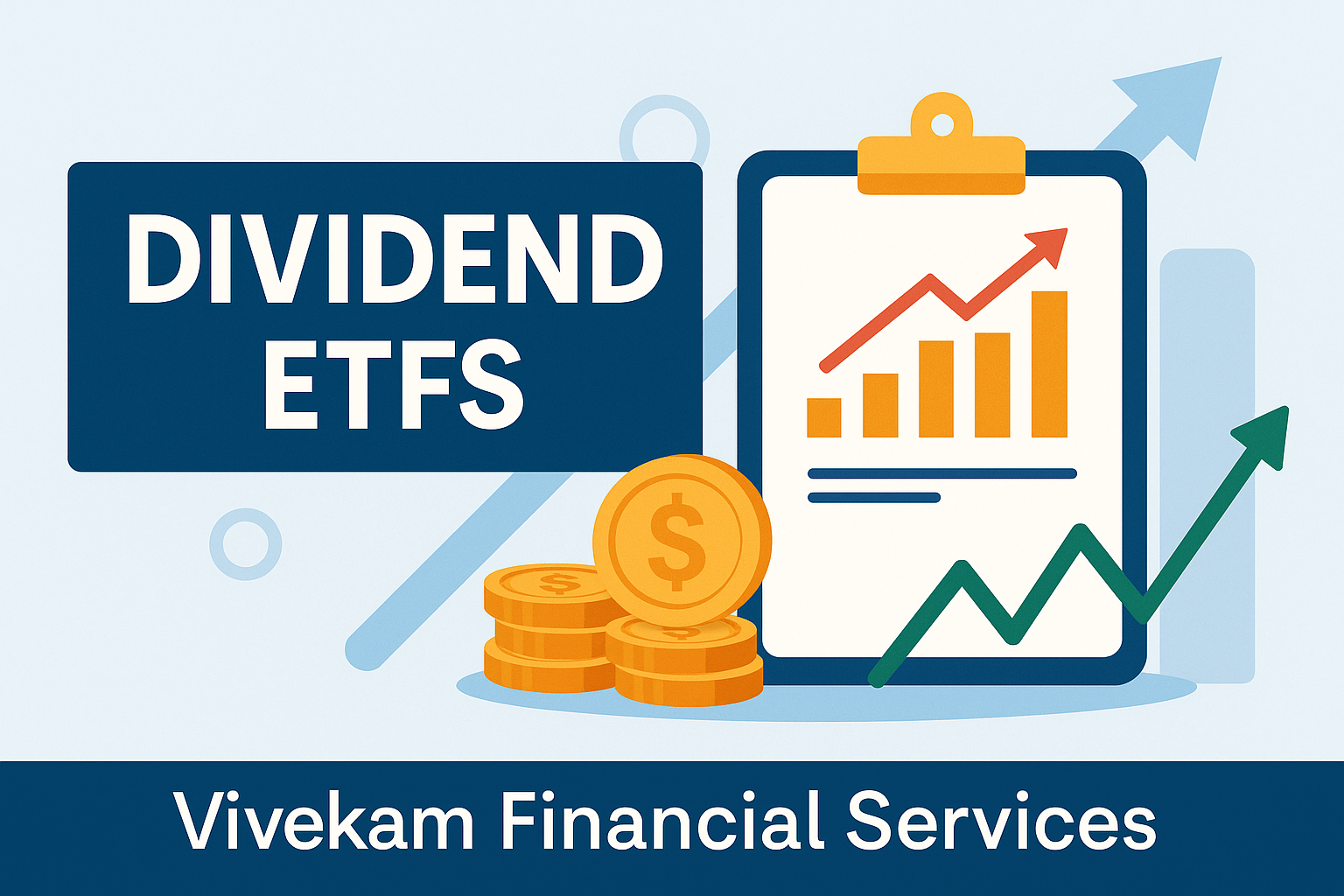Dividend ETFs: Smart Passive Income or Overrated?

Dividend ETFs often get hyped as the holy grail of ETF investing. Some investors swear by them for steady, predictable income. Others say the returns are lukewarm compared to growth-focused investments. So what’s the truth? Are they smart passive income generators—or a strategy that’s more overrated than people realize?
Let’s break it down with real clarity, practical examples, and the facts people never say out loud.
Introduction to Dividend ETFs
What Are Dividend ETFs and How Do They Work?
Dividend ETFs are simply baskets of dividend-paying stocks. Instead of handpicking 20 different companies, you buy one ETF that holds them all. The fund collects dividends from every company inside it, then passes those payments to you.
This makes ETF investing far easier and far safer than buying single dividend stocks that can cut payouts without warning.
Why Dividend ETFs Have Become Popular Among Investors
Two words: simplicity and consistency. Dividend ETFs offer payout stability even in messy market environments. They suit beginners, retirees, and long-term investors who prefer predictable income over adrenaline-fueled tech stock swings.
Do ETFs Pay Dividends? Understanding Payout Structures
How Dividends Are Collected Inside an ETF
Yes—ETFs do pay dividends as long as the companies inside the ETF also pay them.
The ETF:
- Receives dividends
- Pools them
- Sends them to investors at regular intervals
It’s automated income without juggling individual payout schedules.
Distribution Frequency: Monthly, Quarterly, or Annually?
This is where things get spicy. Some ETFs pay:
- Monthly dividends (e.g., JEPI, DIV)
- Quarterly dividends (most common)
- Annual dividends (rare)
Monthly dividend ETFs are popular because they feel like a paycheck.
Types of Dividend ETFs
High Dividend ETFs
These chase higher-than-average yields. But beware: yield can be a trap.
A stock yielding 8% isn’t always “better” — sometimes it’s just “riskier.” High dividend ETF options often include utilities, REITs, or slower-growth companies.
Dividend Growth ETFs
These are investor favorites. Instead of chasing high yields, they invest in companies that consistently raise dividends. Examples include:
- SCHD
- VIG
These ETFs tend to outperform high-yield ones long-term.
Monthly Dividend ETFs
Monthly dividend ETFs offer smoother cash flow but often use strategies like covered calls. They trade upside potential for higher income.
Benefits of Dividend ETFs
Passive Income Simplified
You don’t have to research 50 companies. You don’t have to worry about dividend safety for each holding. Dividend ETFs automate everything.
Diversification Advantages
If one company cuts its dividend, the ETF barely flinches. That’s the beauty of owning a basket instead of a single point of failure.
Lower Risk Compared to Individual Stocks
Individual dividend stocks can collapse (looking at you, AT&T).
Dividend ETFs soften the blow.
Risks of Dividend ETFs
Dividend Cuts and Market Cycles
Dividend ETFs aren’t invincible—economic downturns affect everyone. If the overall market weakens, payouts can shrink.
Interest Rate Sensitivity
When rates rise, dividend ETFs often fall. Income investors shift to bonds or money market funds with higher yields and lower risk.
Over-Concentration in Certain Sectors
Some dividend ETFs lean heavily into sectors like energy, real estate, or utilities. That concentration can create hidden risk.
Dividend ETFs vs. Growth ETFs
Income vs. Capital Appreciation
Dividend ETFs give you cash flow.
Growth ETFs give you long-term upside.
Choosing between them depends on whether you care more about checks now or bigger gains later.
Volatility Comparison
Growth ETFs are the roller coaster. Dividend ETFs are the merry-go-round. Pick your ride.
Which Performs Better Long-Term?
Historically, growth ETFs outperform—but dividend ETFs shine when the economy slows.
Who Should Invest in Dividend ETFs?
Retirees and Income-Focused Investors
Steady payouts = predictable budgeting. Perfect for retirement planning.
Beginners Seeking Stability
Dividend ETFs are simple, forgiving, and substantially less volatile for new investors learning the ropes.
Long-Term Investors Interested in Compounding
Reinvesting dividends through DRIP builds wealth quietly but powerfully.
Are Dividend ETFs Suitable for Passive Income?
How Much Can You Realistically Earn?
A realistic 3–4% yield is common.
To earn $400/month? You’d need about $120,000 invested.
To earn $1,000/month? Closer to $300,000+.
Yield vs. Total Return: What Matters More
A moderate yield + strong growth usually beats a high yield with no appreciation.
How to Choose the Best Dividend ETFs
Expense Ratios
Lower is better. Every fee reduces your returns over time.
Dividend Yield and Growth History
Stable, rising dividends beat flashy high yields almost every time.
Portfolio Holdings and Sector Exposure
Check whether the ETF is tilted toward one risky sector.
Popular Dividend ETFs to Consider
High Dividend Options
- VYM
- HDV
Dividend Growth Favorites
- SCHD
- VIG
Monthly Payout Choices
- JEPI
- DIV
Frequently Asked Questions (FAQs)
1. Are dividend ETFs good for beginners?
Yes, dividend ETFs are simple to understand and provide instant diversification.
2. Do dividend ETFs lose value when they pay dividends?
Not exactly. The share price may drop slightly after the payout but typically recovers.
3. Are high dividend ETFs risky?
They can be riskier if the high yield comes from unstable companies.
4. How often do dividend ETFs pay?
Most pay quarterly, but many offer monthly distributions.
5. Can dividend ETFs replace my job income?
It depends on your investment amount. Significant income requires a sizable portfolio.
6. What’s better: dividend ETFs or individual dividend stocks?
For most people, dividend ETFs offer better diversification and lower risk.
Conclusion
Dividend ETFs aren’t magic, but they aren’t overrated either. They’re a balanced, steady, and low-stress way to build passive income while enjoying diversification. Whether they fit your strategy depends on your goals—but for most long-term investors, they remain a powerful tool.







